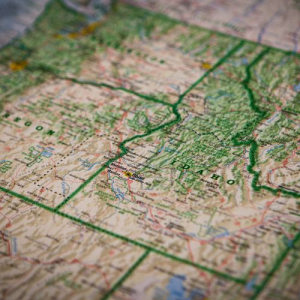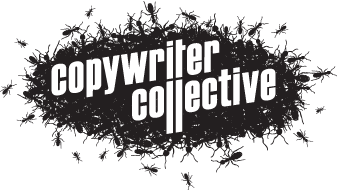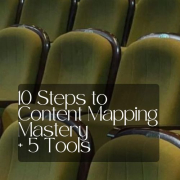10 Steps to Content Mapping Mastery + 5 Tools
You have spent a good amount of resources to produce quality blog posts, email newsletters, and case studies to target potential leads; but the results are disappointing. Instead of getting positive results, your content has a high bounce rate, low engagement, and does not lead your audience to convert.
So what are you doing wrong?
Maybe, it’s not that the content is bad but the right content that your audience needs is not met enough. Most likely, you aren’t engaging because the content does not align with the audiences’ needs at different stages of their decision-making process.
The answer to this could be a content map.
After reading this post, you will further understand the steps to effective content mapping and the difference it can make in conversion outcomes.
Table of Contents
First, What is Content Mapping?
Content mapping is a way of listing down and aligning content topics for each stage of your buyer’s journey. The content map, then, serves as a blueprint to help you create connecting topics to address the needs and target the right readers of your content.
You use your customers’ data to deliver tailored information, meeting their specific needs as they progress from awareness to decision stages. It is a way to organize your efforts well, making each piece relevant and increasing the chance of securing brand success and customer satisfaction.
Steps to Your Content Mapping Journey
Step 1: Define Your Target Audience and Buyer Personas
Data gathering is always important.
If you want your content to matter, you need to define and understand your target audiences first.
Define your buyer personas and get information about their demographics, pain points, and motivations by exploring various analytics tools, surveys, interviews, focus group discussions, social media comments, and reading customer feedback. By identifying these personas’ unique needs and challenges, you can create targeted content for them. This way, you can guide your content strategy more effectively.
Doing this essential first step will determine what each persona will look for at which stage of your content journey mapping. With this, you can reach out directly to your users, increasing relevance and swelling engagement across the entire customer journey.
Step 2: Map Out the Buyer’s Journey Stages
Mapping the buyer’s journey is a critical activity in creating content that will support the potential customer at different stages: awareness, consideration, and decision.
- Awareness Stage: In this part, the target customers realize that they indeed have a problem but do not know the solutions yet.
Education and information should form part of the content here that can empower them to realize their challenges and needs. You will catch the frequently asked questions and concerns of most consumers during the initial phases of their journey with customer feedback and keyword research insights.
- Consideration Stage: Your customers weigh the options to choose the best fit.
It is quite crucial to compare the solution and gain in-depth information through content mapping to guide your customer from options. Content mapping to compare the solution and obtain in-depth information is necessary to help your customer choose from options. Customer-facing teams will share the most frequently asked questions and common objections, and then the content strategy can be concentrated in those areas.
- Decision Stage: This is the decision-making aspect where your customers are ready to buy.
The content should have to surpass the objections that are still present and outline the advantages. Case studies, testimonials, and even product demos could prove helpful support for decisions to be made.
Step 3: Conduct a Content Audit
92% of marketers consider producing high-quality content a non-negotiable to thrive in the industry. But you shouldn’t forget that there’s still potential for your previous content to still give you results. Therefore, from time to time, you should conduct a content audit.
A content audit basically scans your available materials to decide which stage of the journey they cater to. Such assessment helps in indicating the gap in content and areas of improvement. Excess in one area could bring forth a lack in another. That’s why you must determine the place where you should bring your attention. Fill those gaps by developing new content or reusing low-performing pieces for specific needs.
For example, nowadays, If you find in your audit that your content needs more engagement, try more visuals such as infographics to make it more interesting. For e-commerce pages, cleaner product visuals could do the trick. Use editing tools such as an online background remover to help refine your product photos and a much better visual appeal. If you’re targeting legal professionals or firms, consider producing or updating materials through legal content writing to ensure accuracy and credibility.
Step 4: Set Clear Content Goals for Each Stage
Breaking down the content objective by stage will make sure that each piece served to the audience has an objective that guides them toward the journey.
-
- Awareness: Attract and inform. At the awareness stage, your aim is to inform or attract by answering any questions or challenges through various, informative article formats such as educational video productions.
- Consideration: In-depth product/service information. The consideration phase for your content must go deeper and compare possible solutions, which will guide prospects in evaluating alternatives with in-depth guide articles, product demos, or even more.
- Decision Stage: Build trust and loyalty. Finally, the built-in confidence of case studies and product comparisons in the decision stage shows value and persuades their action. Testimonials, success stories, or head-to-head comparisons provide real-life impact, where credibility is established and commitment is driven.
The custom approach per stage does provide engagement at every single click by aligning all kinds of content to intent audiences.
Step 5: Assign Content Types to Buyer Needs
The right format of content at every stage of the customer journey will ensure that the content answers the precise needs of your customer.
Blog posts, infographics, and short videos would be very useful for quick information digestion, which would capture the target audience’s eye during the awareness phase.
For example, the type of content can be something like “The Beginner’s Guide to Sustainable Home Heating,” where your brand positions itself as a helpful source.
In consideration and decision phases, it would be webinars, eBooks, or case studies that would answer questions and then compare options.
Thus, you need to develop diversified content formats in order to keep the user engaged and make them explore further. For those managing complex projects or aiming to optimize workflows, leveraging Six Sigma process templates can add structure and clarity when content must align with quality standards during each buyer journey stage. Quizzes are good for the awareness stage since they contain interactive content. Webinars are great to get people to consider your offers comprehensively.
All of these tips work through content journey mapping so that every stage of engagement is increased and supports a strategic approach to content marketing.
Step 6: Develop a Visual Content Mapping Framework
A visual mapping framework of content types and personas will be helpful to map them against exact journey stages. You may use Lucidchart or a personal template with a white background for clarity or even a simple spreadsheet for the purpose. Every item on your map needs to have a persona corresponding to the appropriate stage in the journey; the kind of content, topic relevance; and suggested calls to actions.
For example, there could be an awareness-stage row for “Tech-savvy Millennial,” and appropriate content types, such as blog posts or infographics. The topic may be “Emerging Tech Trends,” with the CTA being a subscription for more insights. Thus, you are able to graphically map your content strategy so that every piece of content produced is meaningful and aligned with audience needs.
Step 7: Identify and Fill Content Gaps
You can easily determine missing content through frequently asked questions, comparison guides, or topics your target audience is seeking but isn’t available. Techniques like keyword research and customer surveys are very effective in surfacing these gaps.
With this, you should focus on content creation at every step that creates the most value for the customer. That means if, in consideration, lots of users are looking for a particular comparison guide, that’s what is most important for you to create. Spotting missing content is an effective way of recognizing and catering to the needs of your customers.
Step 8: Plan Content Sequencing and Consistent Publishing
The next step is to create a content calendar that is well-aligned to the stages of the buyer’s journey. You could use a Trello or Asana structure to map this content timeline so that every single piece of material hits the floor at just the right time.
Make sure that strategically, content is sequenced so that marketing deliverables that, by their nature, would naturally flow from awareness-building pieces to deeper consideration materials eventually lead to decision-making content.
Consistent publishing helps keep the audience engaged and supports audiences through the myriad of product and service offerings as they make their way through the stages.
Step 9: Optimize Content for SEO and Discoverability
You can further use content mapping tools related to SEO to optimize your keywords, meta descriptions, and internal linking. As a matter of fact, today, 68% of all online experiences start with a search engine. Optimization of keywords will ensure that your content gets picked up by the search engines, and compelling meta descriptions will force clicks.
A linkage strategy should also be developed between the internal links so that related content within different phases of the buyer’s journey is connected. For instance, link an introductory blog post in the awareness stage, such as “Top Signs It’s Time for a Career Change,” with a consideration stage resource like “How to Choose the Right Career Path for You.” This keeps users interested and smooths their journey. In turn, it would ensure users do not break the chain, going from one piece to the other, and will enhance the overall user experience with this natural flow through the funnel.
Step 10: Track Key Performance Indicators (KPIs) and Refine Content Mapping
Finally, one of the biggest approaches to refine your content mapping strategy would be the measurement of KPIs. For awareness, monitor time on page, social shares, and understand to what levels their engagement has reached. For consideration, check your content’s click-through rates and number of lead-generating form fills. Lastly, for the decision stage, always monitor your conversion rate and figures of the sale.
Regularly review this performance data with customer feedback and find areas for improvement. This is an iterative approach, and you can be sure that each piece on your content map is getting your audience through their journey.
 5 Tools to Support Content Mapping Success
5 Tools to Support Content Mapping Success
- HubSpot: It is a very powerful CRM helping content map because it allows the user to segment his or her audience quite deeply. This can tailor content marketing efforts to match specific needs of different buyer personas, so this really works in relation to your overall content strategy.
- SEMrush: SEMrush is primarily a keyword research and competitive analysis software. It optimizes content for better reach and visibility and aligns with audience search behavior, so this tool is one of the key players in effective content journey mapping.
- Lucidchart: It is an incredibly effective tool for creating graphics regarding flow of content and a buyer journey. What’s new here is that such graphic-making helps teams imagine in some way how pieces of content may fit together to inform a bigger content strategy, which makes it all so much easier to fill the gaps and find opportunity areas.
- Trello: A high-quality project management system that could be best used in the planning and scheduling of projects regarding the content. It helps the teams collaborate in planning and ensures the content is posted on a regular basis against the mapped buying stages.
- WSQ Copywriting & Content Writing Course: This course itself serves as a vital tool for content mapping success. It provides a structured framework for understanding how content aligns with business goals, buyer personas, and audience intent. Through hands-on training, learners develop practical skills in mapping content to each stage of the customer journey, supported by tools like HubSpot, SEMrush, and Google Analytics. By combining strategy with craft, the WSQ course helps writers move beyond copy creation to deliver content that performs with purpose and measurable impact.
- Google Analytics: This tool helps to track your audience behavior and monitor the content’s performance. You can make improved changes in the content mapping process through real-time data and better the overall content strategy for audience needs.
Conclusion
Mastering content mapping is an important activity to help develop an effective content marketing strategy for the needs of your audience at every stage of their journey. Focusing on audience insights, adding engaging formats, and achieving consistency across channels will give you stronger connectivity with your prospects. More importantly, the application of data-driven adjustments and the use of visual aids will enhance the understanding and engagement, and this would then lead to better performance and results.
If applied, these tactics will make your content strategy successful while establishing your existence in the marketplace. But always remember that being flexible and responsive to feedback ensures that your content will remain relevant and impactful in an ever-changing landscape to outperform competitors and enjoy long-term success.
Looking for a Content Creator to join your marketing team? Contact copywriter collective today.



